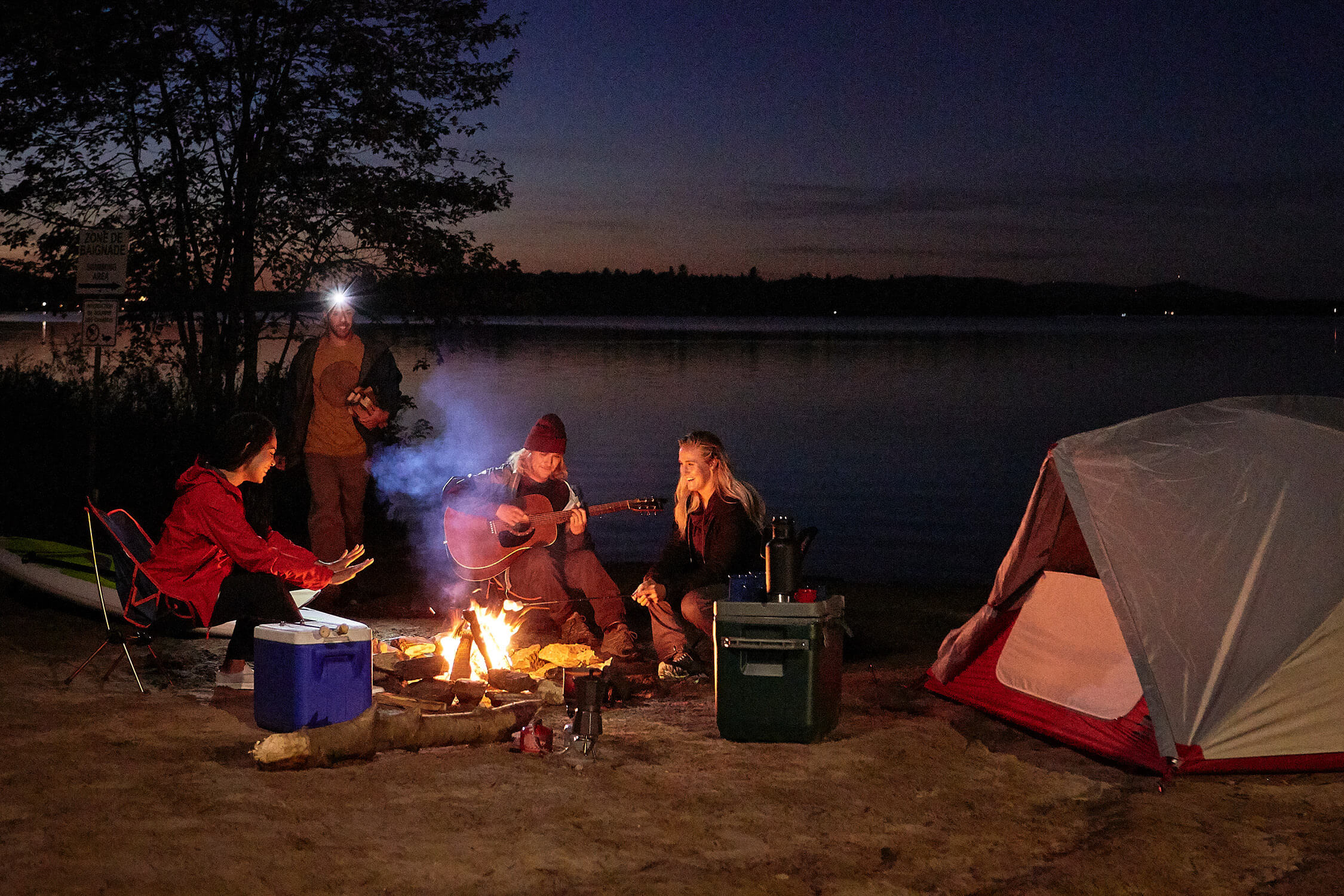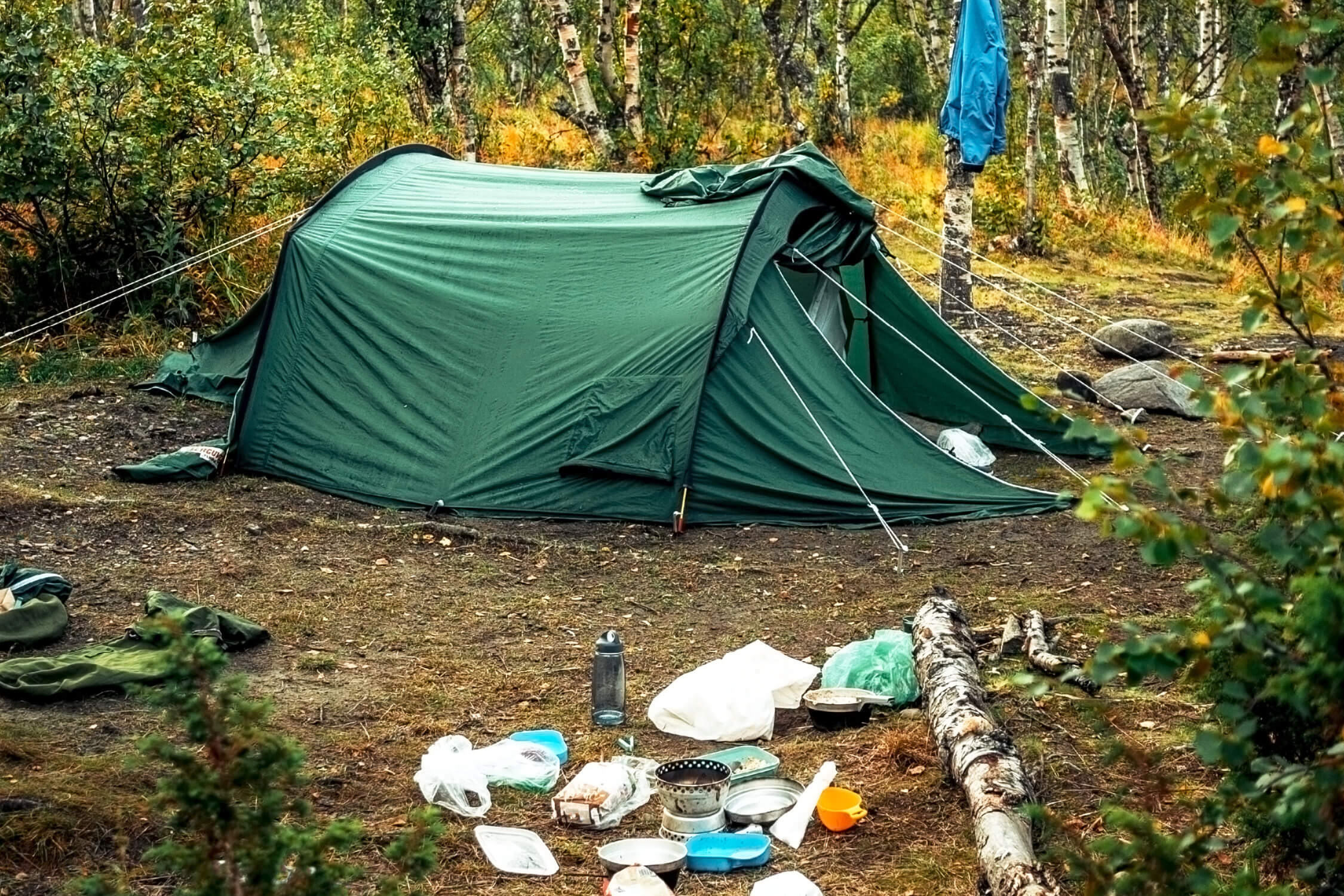Eco-friendly camp kitchen
Camping | July 26, 2022
SAIL
January 25, 2023

If you have never heard of the Leave No Trace principles, it is very simple: it consists of a list of common-sense tips to enjoy the benefits of nature in a sensitive and responsible way. Whether it is for a day hike, a week of camping or even a fishing trip, our visit has an impact on the natural spaces in which we roam, and it is up to us to be aware of this.
Adopting a “leave no trace” outdoors sense of ethics is therefore important, especially at a time when more and more of us frequent outdoor places and venture into nature. Here are the 7 principles of Leave No Trace to preserve our play areas, nature, and wildlife as much as possible
This article was produced in collaboration with Earth Day Canada.

In this article, you will learn more about these 7 principles:
First step, a good preparation of your outdoor activity will give you the means to better preserve nature. The first thing is to find out about the rules and particularities of the site where you want to go: are dogs accepted there? Where is it allowed to camp or make a fire? Are there protected areas? Knowing your route well and anticipating the weather also allows you not to have to trample the vegetation to find the path that you will have lost or to take shelter. Finally, plan a light waste backpack, for example by using reusable water bottles and containers.
Drawing inspiration from indigenous communities, we must learn to see flora and fauna as a precious heritage. In the case of outdoor activities, the best way to preserve this heritage is to leave it intact. It means resisting the temptation to touch natural elements such as stones, plants, flowers or mushrooms, remembering that they are part of an entire ecosystem. You can get into the habit of observing the richness of the surroundings of the trail in its original state and without venturing into places where you have to trample the vegetation.
Did you know that it only takes about ten passages in the same place to have a severe impact on the vegetation, accelerate erosion or even create a furrow in which water will rush through during the next rain? The idea is therefore to learn to use the paths and places already dedicated to your passage without widening them! A good example is to walk in the middle of the trail in a single file, even if it is muddy, wet, and slippery, to avoid widening it and creating other trails. In the same way, you can pay attention to where you set your trekking poles to preserve the edges of the trail.
Durable surfaces where you have a smaller impact are bare ground, rock, gravel, sand, dry grass and deep snow. If you are in virgin areas, try to limit repeated passages in the same place and disperse your impact.
Campfires can cause lasting impacts on wildlife, flora, and the landscape. That being said, several things can help you preserve nature in this area. The first is to favour cooking over a burner, preferably a small one, and to keep lighting a fire for a special occasion. And yes, it is about rethinking your whole conception of the outdoors!
f you really want to start a fire, do it in dedicated places or on durable surfaces (which you are now familiar with), making sure to keep it small. As for wood, either you can get some on the spot (do not bring your own, as there is a risk of introducing parasites), or you can collect some, taking care to burn only dead wood picked up on the ground and which can be broken by hand. One last very important thing, watch your fire and do not forget to put it out with water if the wood has not been completely reduced to ashes when you are done.
In the outdoors, we evolve in the habitat of other species that have the right to tranquility. This starts with observing them from a distance and not making too much noise, especially during the delicate periods of reproduction, nesting or even during winter. Then, for a good cohabitation, always deposit your food and your waste in a safe place or high up. Lastly, during your meals, keep an eye out so as not to leave any leftover food on the ground: it’s a way of respecting the habitat of animals while preserving their health!

If there is a principle of Leave No Trace to adopt in priority, it is this one! A piece of waste forgotten by mistake can remain long after our visit… up to two years for a simple banana peel, for instance. So, get into the habit of bringing a bag to take back (and sort) all your waste, and even pick up what you encounter along the way. Also remember that burning your waste is not a solution!
If camping, get into the habit of reusing your water as much as possible, using little (or no) biodegradable soap, and spreading your wastewater on the ground (or in a hole), 70 metres from any stream or lake. One thing to remember is that biodegradable products can biodegrade in the ground… not in water! If you want to wash yourself properly, refrain from doing so in a river or a lake at the risk of disturbing an entire ecosystem, and favour portable showers that you discharge far from the banks. As for the best way to manage your bathroom needs in nature, find out in this article!
The Leave No Trace ethics also mean seeking to promote a pleasant experience for everyone. For example, did you know that on a narrow path, it is customary to give priority to people going uphill? Whether it is for wildlife or people in the area, it is also showing respect to try to make as little noise as possible. You will also come to discover that nature has a lot to offer when you take time to listen to it and observe it!